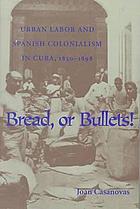
A significant body of scholarship fore-grounds the transition from slavery to free labor as the defining change at the turn of the twentieth century. Rebecca J. Scott’s 1985 monograph Slave Emancipation in Cuba (discussed above) pioneered this line of inquiry. Therein, she dedicates the final chapters to charting the ways formerly enslaved people carved out space for themselves and their families in Cuba’s late-nineteenth-century economy and society. From there, her subsequent work focused more specifically on the implications of those economic subsistence strategies for the freedom and citizenship of these men and women. Scott’s Degrees of Freedom: Louisiana and Cuba after Slavery, for example, charts the parallel struggles for freedom by black Cubans and Louisianans in the decades following the abolition of slavery. Similarly, her contribution to Beyond Slavery: Explorations of Race, Labor, and Citizenship in Postemancipation Societies by Frederick Cooper, Thomas C. Holt, and Scott offers a condensed comparison of Louisiana and Cuba during their paths to abolition and transitions to free labor, situated within the book’s broader discussion of postemancipation case studies in the British Empire and Africa. In a more recent contribution to State of Ambiguity: Civic Life and Culture in Cuba’s First Republic, edited by Steven Palmer, José Antonio Piqueras, and Amparo Sánchez Cobos, Scott suggests that formerly enslaved Cubans in a rural sugar district did assume some form of citizenship as they pressed against the deeply embedded structures of Spanish colonial rule and the newer imperial presence of the United States.
Parallel postemancipation studies have tended to focus specifically on the realm of labor activism. In Bread or Bullets!: Urban Labor and Spanish Colonialism in Cuba, 1850-1898, Joan Casanova points out that the nineteenth century’s largest labor mobilizations occurred in the wake of the abolition of slavery, despite the deep racial and ethnic divisions characterizing the working class. Similarly, Kirwin R. Shaffer examines the connections between black political mobilization and labor activism after slavery. In Anarchism and Countercultural Politics in Early Twentieth-Century Cuba, he shows how race complicated conventional anarchist concerns over class in Cuba, suggesting that anarchists actively, though with limited success, attempted to recruit black Cubans to their movement.
Another more recent approach to examining Cuba’s postemancipation society has been to explore labor policies in relation to the immigration of black workers. With the first US military occupation of Cuba (1899–1902), US administrators applied racially restrictive immigration policies similar to the ones that reigned in the Progressive Era United States, which limited the admission of Chinese and black immigrants. While these policies aimed to “protect” Cuba’s supposedly white heritage, they often clashed with the interests of large sugar companies, which sought to import labor to keep workers’ wages low and fragment the labor force. Through correspondence and oral histories, Robert Whitney and Graciela Chailloux Laffita examine the immigration experiences and living and working conditions of British West Indian workers who came to Cuba during the first half of the twentieth century. Although they concede that far more Haitians immigrated to Cuba than did British West Indians, in Subjects or Citizens: British Caribbean Workers in Cuba, 1900–1960, they focus on the latter because of the stronger archival record left by members of this group, who believed that as British imperial subjects they were entitled to certain rights. In Rescuing Our Roots: The African Anglo-Caribbean Diaspora in Contemporary Cuba, Andrea J. Queeley charts the struggles of Anglo-Caribbean immigrants to preserve their culture in Cuba amidst the massive social and political changes of the twentieth century. Philip A. Howard’s Black Labor, White Sugar: Caribbean Braceros and Their Struggle for Power in the Cuban Sugar Industry expands the analysis to include both Jamaicans and Haitians, whose experiences he examines from a worker’s perspective. These works illustrate the protracted and tentative nature of transition from slavery to freedom.
 Bread, or bullets! : urban labor and Spanish colonialism in Cuba, 1850-1898
by
Bread, or bullets! : urban labor and Spanish colonialism in Cuba, 1850-1898
by